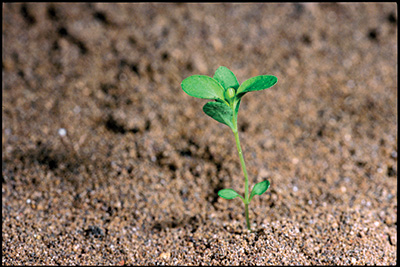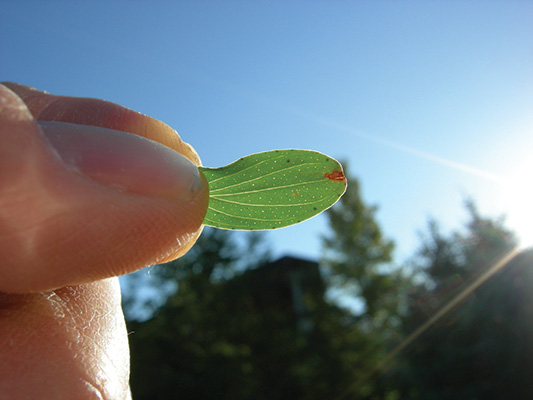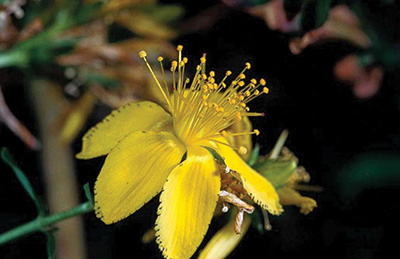Stem
- Up to 4 ft. tall with a woody base; highly branched; lacks hair (glabrous) and often rust colored with 2 ridges that run the length of the stem

Common St. Johnswort seedling
Leaves
- Opposite, oval to strap-like (linear), prominent veins, less than 1 in. long, lack hair and no leaf stems (petioles); edges (margins) are smooth with the lower surface lined with small black dots
- Surface covered with tiny transparent dots that can be seen by holding the leaf up to the light

Common St. Johnswort leaf
Flower
- 0.75 in. diameter; 5 yellow petals that often have tiny black dots around the edges; many stamens; clustered at tips of branches

Common St. Johnswort flower
Root
- Stout taproot with spreading rhizomes
Common St. Johnswort plant
Other
- Grows best on coarse-textured, gravelly, well-drained soils; known to occur in Elko county
- Perennial; reproduces by seed and rhizomes
- Ingestion causes skin irritation and weight loss in white-haired animals; sometimes cultivated as a crop and used for medicinal purposes (as an antidepressant)
- Also known as Klamath weed
Control
- Mowing, grazing and burning are NOT effective
- A biological control agent is available
- Apply 2,4-D or glyphosate to actively growing plants prior to bloom; aminopyralid, metsulfuron or picloram pre or post-emergence
Blecker, L., Creech, E., Dick, J., Gephart, S., Hefner, M., Kratsch, H., Moe, A., Schultz, B.
2020,
Nevada Noxious Weed Field Guide – Common St. Johnswort,
Extension, University of Nevada, Reno, Field Guide


